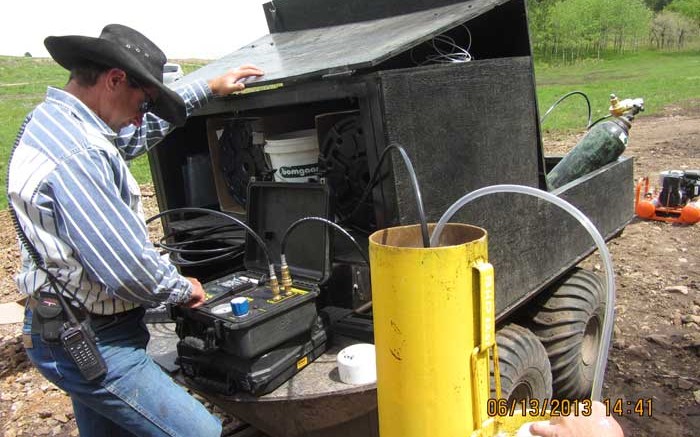VANCOUVER — It’s been over two years since U.S.-based Rare Element Resources (TSX: RES; NYSE-MKT: REE) released an economic study on its Bear Lodge rare earth minerals property in northeastern Wyoming, and according to president and CEO Randall Scott, both the rare earth marketplace and project have “significantly changed.” On Aug. 26 Rare Element released a prefeasibility study (PFS) on Bear Lodge that incorporates a large resource expansion, and what the company says are “numerous operational improvements.”
Among the improvements is a major jump in resources. In March the company boosted the project’s measured and indicated resources by 85% to 16.3 million tonnes grading 3.05% total rare earth oxides (TREO) for 1.1 billion contained lb.
The company also incorporated its Whitetail Ridge open-pit deposit into Bear Lodge’s mine plan alongside the Bull Hill mine, with proven and probable reserves sitting at 14.2 million tonnes of 2.78% TREO for 867 million contained lb.
Another boon for Rare Element includes its rare-earth recovery process, which delivers a 97% pure, nearly thorium-free concentrate in pilot-plant testing, which led the company to file a patent application on both the recovery and thorium isolation processes.
The benefits of this technology include an overall average rare earth element recovery of 85% and the ability to recycle and regenerate the major reagents used in the process, which drops operating costs and leads to a “zero discharge” project.
The physical layout and logistics of the project haven’t shifted too much since Rare Element’s last PFS. Bear Lodge will still be a conventional open-pit operation that includes a physical upgrading plant for mineral pre-concentration located next to the mine, and a hydrometallurgical (hydromet) plant — located near Upton, Wyo. — for further concentration of the rare earth Element into a mixed TREO concentrate.
The hydromet plant is designed to process the pre-concentrate through acid leaching followed by the company’s proprietary recovery technology. The process uses a chloride solution to extract the rare earth Element (REE) into a liquid, and uses oxalate reagents to facilitate the REE’s selective precipitation.
In addition to producing a more pure TREO concentrate, Rare Element has decreased its upfront capital expenditures at Bear Lodge by US$44 million to US$290 million, and increased mine life by 136% to 45 years. The mine would crank out 6,800 tonnes of TREO concentrate annually, with the hydromet plant operating at estimated rare earth recovery rates of 88.3% over the first nine years, and 89.9% over the mine’s life.
With the improved concentrate purity, Rare Element has assumed a stronger valuation on its TREO production. In 2012 the company assumed a 45% TREO grade, whereas the new study assumes the 97% purity concentrate.
As a result, the discount relative to weighted average basket price ascribed to Rare Element’s “basket” of rare earths has dropped from 40% under the initial study to 25% in the new PFS. The discount accounts for further costs to separate the high-quality mixed TREO concentrate into individual rare earth oxides. The company has boosted its TREO concentrate valuation from US$17.36 per kg to US$24.60 per kg.
Rare Element notes that current projections from “leading industry analysts” call for an average of between 7% and 8% per annum growth in REE demand from 2013 to 2020, and adds that production costs in industry-leading China have spiked, with the Chinese government announcing purchase prices for a domestic stockpiling program of certain rare earths that could reduce available supplies.
Under the base-case scenario, Bear Lodge features a 29% after-tax internal rate of return (IRR) and a US$330-million net present value (NPV) at a 10% discount rate, with initial capital-cost payback within three years. Operating costs have jumped from US$6.57 to US$15.05 per kilogram of TREO, though the company notes the higher concentrate purity.
“We have made great progress over the last two years,” Scott said in the release. “During this same timeframe, we have seen the rare earth marketplace change significantly and have gained a better understanding of customer needs. Importantly, there remains further upside opportunity from the exploration of identified additional targets with heavy rare earth enrichment, operating cost reductions from further optimization of our proprietary technology, monetization of potentially valuable by-products within the deposit and our continuing evaluation of downstream separation.”
Rare Element has traded within a 52-week window of $1.12 to $3.60, and closed at $1.15 per share at press time. The company started the year with cash and equivalents totalling US$24 million, and has 48 million shares outstanding for a $54-million market capitalization.


Be the first to comment on "Rare Element sees ‘significant change’ in REE markets"